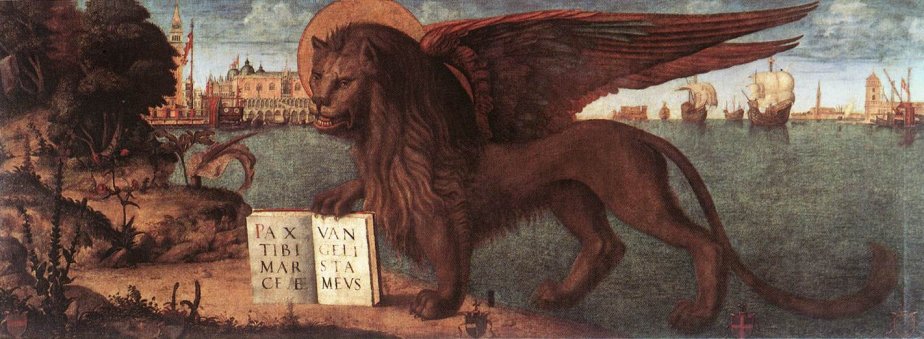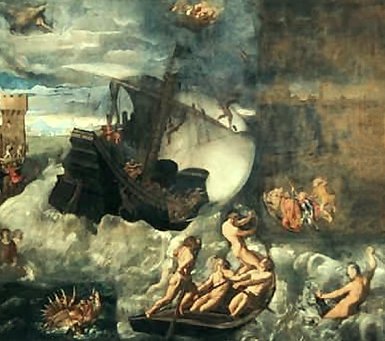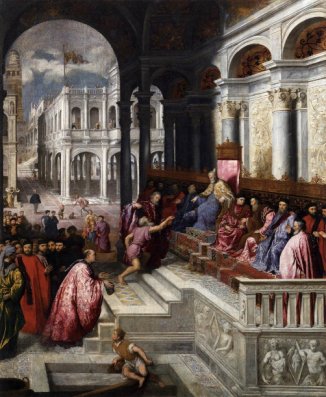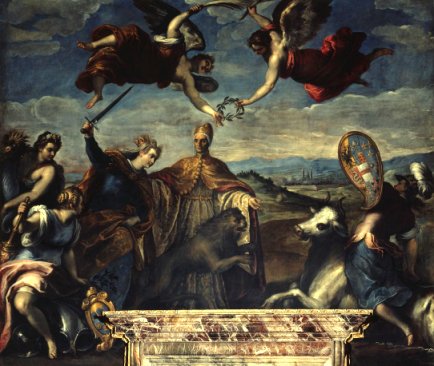|
Saint
Mark and Venice |
|
|
|
|
|
Carpaccio's famous image shows
the lion of St Mark bearing his message of peace but ready nevertheless to
defend the city of his chosen people. There is a tradition, of course,
of calling
on higher powers to take your side in battle; the pagans did it, and the
victory of Constantine at the battle of the Milvian bridge in 312 was a
turning point for Christianity. |
|
| February 25, 1341 was a stormy day in Venice. An elderly fisherman was sheltering in his boat near the Piazza San Marco when a strange figure appeared from the direction of the basilica and asked him to take him to the island of San Giorgio Maggiore. He did so, where they met another strange figure who asked for a lift to the church of San Nicolo on the Lido. (Presumably the vaporetti were on strike that day.) There, a third figure climbed on board. They then revealed themselves as none other than St Mark, St George and St. Nicholas! They all headed out to sea, where they met a shipload of demons intent on destroying Venice. (These days they would probably have come by bus from the airport.) The three saints defeated the demons and saved the city. (See below left; I have to say I'm not quite clear why the fisherman and his friends would set out to sea with no clothes on.) St Mark gave the fisherman a ring, which he was to present to the Doge; he is doing so in Bordone's painting below right. | |
|
|
|
| Palma il Giovane's Allegory of the League of Cambrai is an extraordinary example of Venetian spin. We see the lion, spurred on by the personification of Venice and the doge, leaping on his cowed enemies. In fact, the War of the League of Cambrai ( 1508 to 1516) resulted in defeat for Venice and the annihilation of its armies. If it hadn't been for Pope Julius II changing sides, Venice could have been done for at that point. Maybe St Mark had a quiet word. | |
|
|
|



